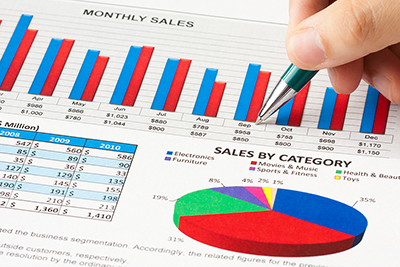Predicting the Unpredictable
Every client believes their demand cannot be predicted. After all, customers don’t know what is going on in their end-to-end supply chain with the global supply chain chaos. Sales teams are optimistic and either forecast too much, hoping Operations will produce and store “just in case” or provide high level dollar forecasts but have no idea which geography it will be sold from or which product grouping will be sold. Marketing might be lost in the clouds analyzing “old” information since the markets are changing real-time and rapidly. New Product Development is racing to keep up with evolving demands. So, how can we predict the unpredictable?
As this has been a common theme with smart, proactive clients, it is worth paying attention. It is possible to predict the unpredictable to the degree required to create a directionally-correct forecast that you can execute against and deliver customer requirements. There is no off-the-shelf solution to achieving success in predicting the unpredictable. Instead, start with a dose of common sense questions.
Common Sense Questions
From a best practice point-of-view, start building a SIOP/ S&OP process (sales, inventory & operations planning) with an emphasis on the forecast (also referred to as a demand plan). You have to start with the customer in mind.
- What is happening in your customers’ supply chains?
- Are your customers well-positioned to take volume during the supply chain chaos or are they more likely to suffer?
- What have been their historical growth rates? Will those continue or were they simply situational?
- Are your customers asking about new products and services? Are they staying up-to-speed on what’s needed to support changing requirements?
- Do you have customer agreements and/or inventory agreements? Should you change them to be tailored to the current situation?
- Is there an opportunity for joint customer visits?
- Do you have quotes? How are the trends?
- If a highly engineered product, what is in common?
- And keep thinking…..
Develop a Demand Plan
Start with whatever is known, add insights based on the commonsense questions, and run the revenue forecast by key stakeholders. Do they think it sounds feasible? Don’t worry about details. Think in terms of customers or customer groups, product lines and / or markets. Do NOT get lost in spreadsheets and numbers and lose sight of the big picture. How does the result compare with expectations, competition and common sense? For most clients, start with a 12-month rolling forecast at the high level. Don’t get side tracked with the feasibility to deliver, resource requirements and inventory levels. Stick to demand. You’ll address later with the capacity side of the SIOP process. If you’d like to learn more about demand planning / sales forecasting, refer to our services webpage.
Incorporate the Demand Plan into Monthly Review Cadence
Review your demand plan as a part of your monthly SIOP/ S&OP process. Gather inputs from Customer Service, Sales, Program Management, Product Managers, Marketing and whoever touches the customer. Continually refine the forecast from a directional point-of-view. If you are chasing pennies, don’t bother. Spend 80% of your time on the 20% of your customers and products that will drive a directionally-correct forecast on a rolling 12-month basis. You’ll have an opportunity to update the forecast monthly with exception processes built in for extenuating circumstances.
Refer to our blog for many articles on demand planning / sales forecasting. Also, read more about these types of strategies in our eBook, Future-Proofing Manufacturing & Supply Chain Post COVID-19. If you are interested in talking about what it would take to purse the demand planning and SIOP journey in your business, contact us.
Did you like this article? Continue reading on this topic:
Shortages Impacting Revenues and Forecasts



